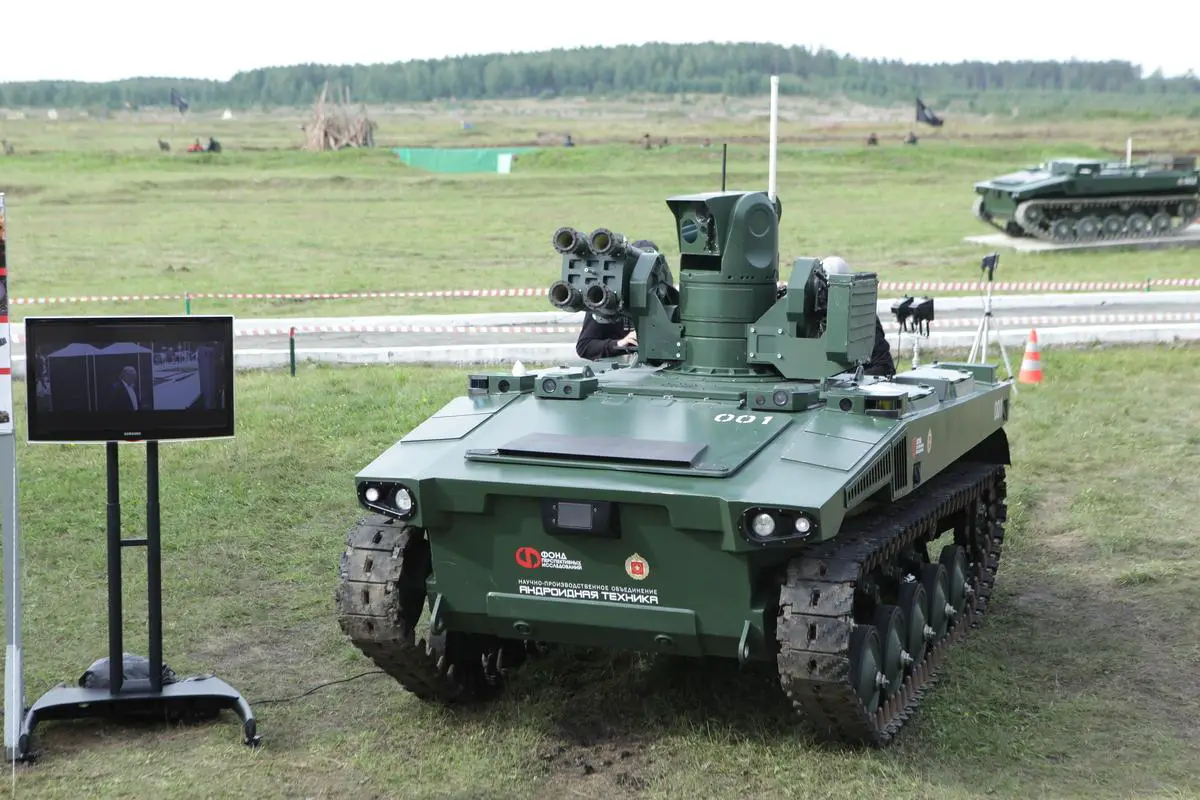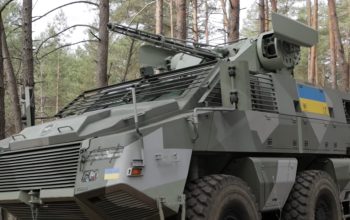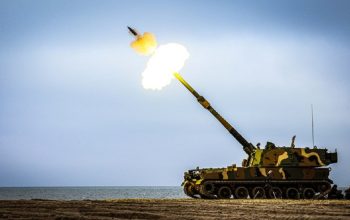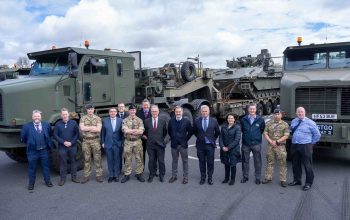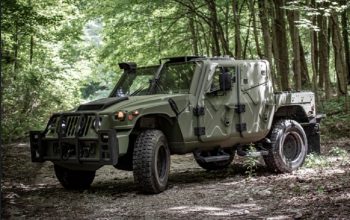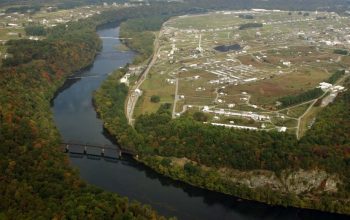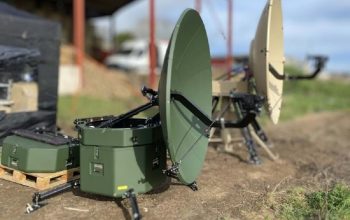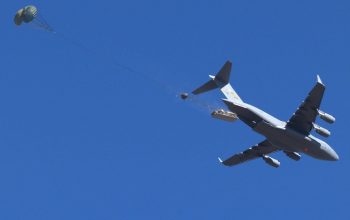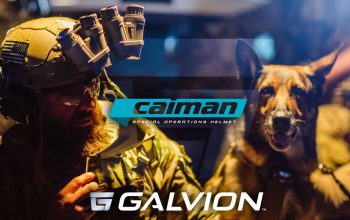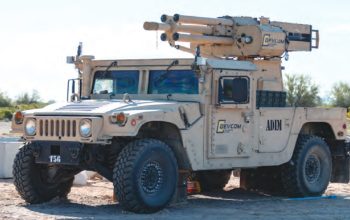According to the press department of the Foundation of Advanced Studies (FPI), Russia’s newest experimental unmanned ground vehicle (UGV) Marker has run 30 km over rugged terrain in autonomous mode. The UGV is active during 48 hours on surfaced roads and during up to 24 hours in rugged terrains. The next stage of the trials will see the Marker covering 50 km, 100 km, and 200 km distances. Previously, the servicemen of Russia’s Central Military District (TsVO) operated the Marker UGV during an exercise at the Chebarkul range. After having already been tested for its maneuvering, tracking and firing capabilities, the Marker has also demonstrated its capability to launch a group of small reconnaissance unmanned aerial vehicles (UAVs) to perform tasks individually or together as a group via a cluster launch module.
The updated Marker UGV was shown with five roadwheels, an idler, a drive sprocket, and two roller returns. A large payload bay area is featured in the rear of the platform with the engine and cooling units to the front. The updated unit can launch a group of small reconnaissance unmanned aerial vehicles (UAVs) to perform tasks individually or together as a group via a cluster launch module. The Marker unmanned ground vehicle (UGV) with a different track configuration as well as a larger body, potentially with the intention to mount larger calibre weapons. The Marker combat platform will indeed be optionally equipped with “kamikaze” type drones. Its design and testing will be completed around 2021. The Marker automatically launches a large number of drones. Each one can operate alone or in a group.
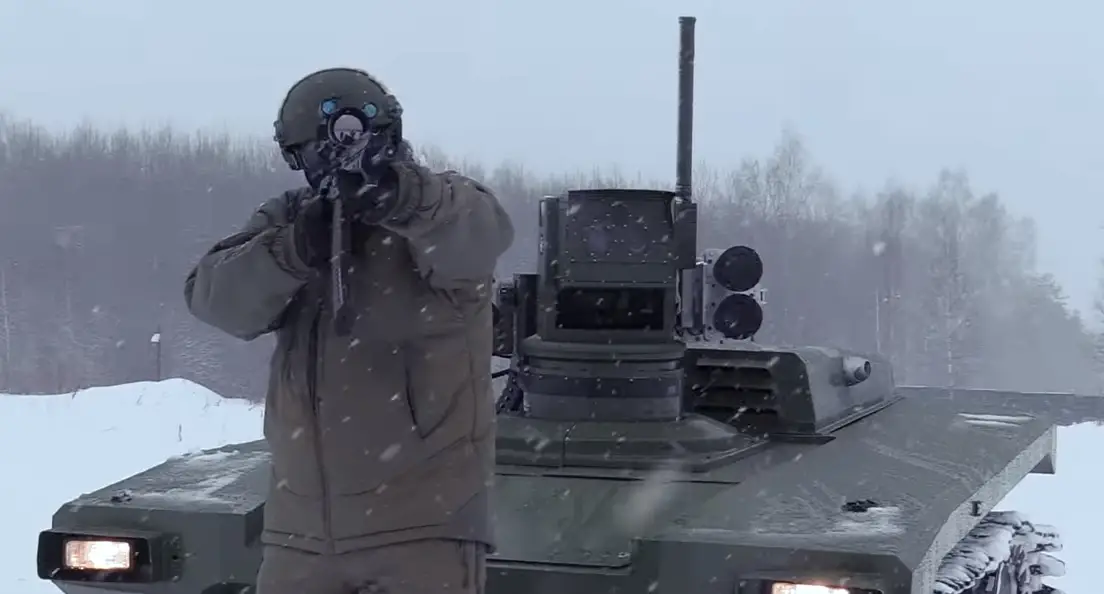
Marker is designed to be modular, with open information architecture. One configuration for the testbed arms it with a Kalashnikov-produced machine gun and anti-tank grenade launchers. More armament combinations may be expected to be tested. A modular multispectral vision and data processing system, featuring neural network algorithms, supports autonomous operations. Other mission systems include a laser warning system, thermal sensors, day/night infrared (IR) cameras, laser rangefinder, target detection, early warning system, identification, and tracking equipment. This generates a new way of cooperation between man and robot where AI-powered sensors take aim and the human checks in before firing. It turns infantry into spotters for robots that will progress on the path of autonomy.
Russian Foundation for Advanced Research Projects (Russian: Фонд перÑпективных иÑÑледований) is an advanced military research agency. The foundation is tasked with informing the country’s leadership on projects that can ensure Russian superiority in defense technology. It will also analyze the risks of any Russian technological backwardness and technological dependence on other powers.In June 2012 President Vladimir Putin has submitted to parliament a bill on the foundation’s establishment. In July 2012 the lower house of the Russian parliament, the State Duma, passed the law in first reading. Deputy Prime Minister Dmitry Rogozin said when he presented the draft law that “The sole purpose of this foundation is to close a gap in advanced research with our Western partners after 20 years of stagnation in the Russian military science and defense industry overall”.


